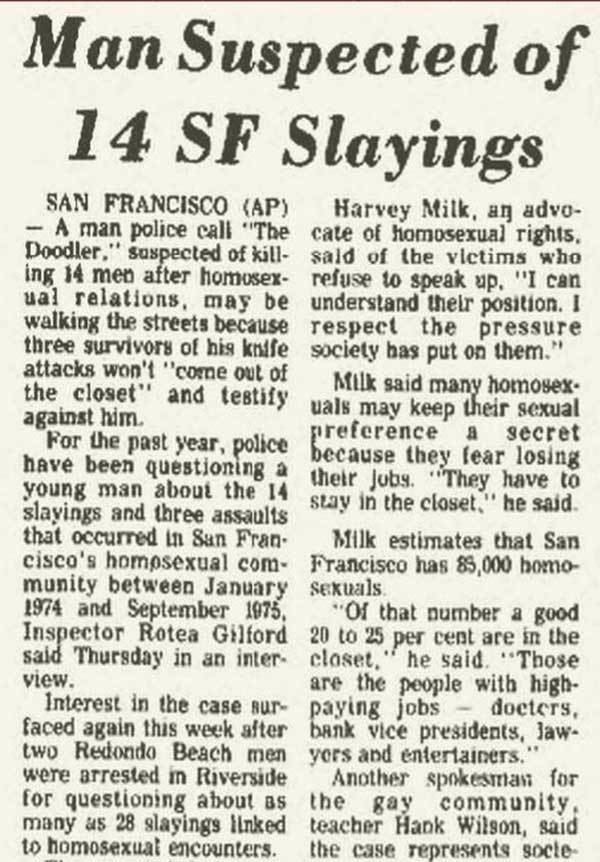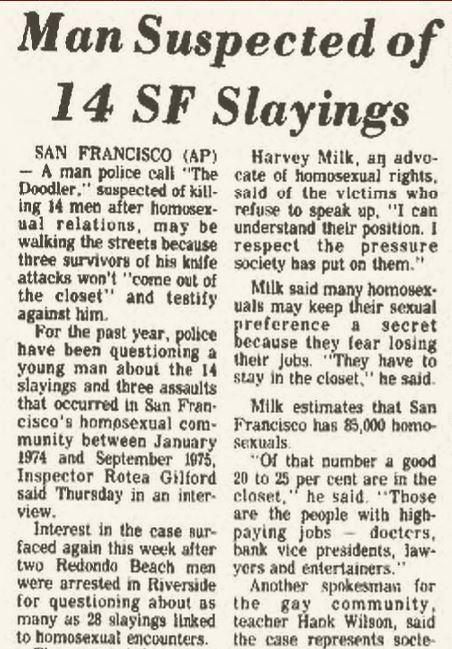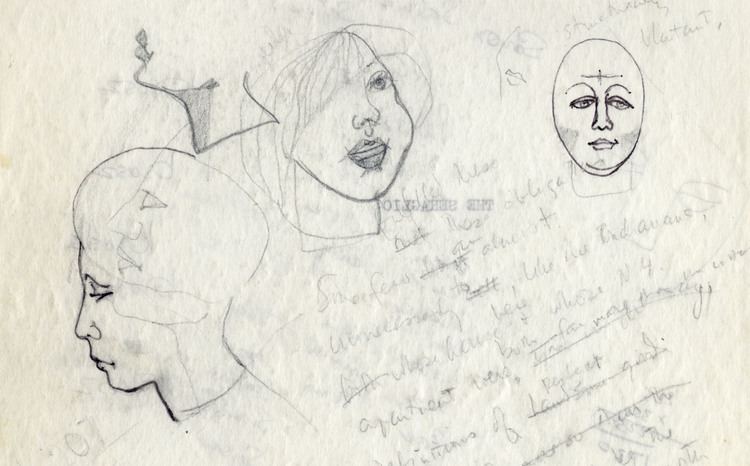Full Name Unknown Victims 14 dead 3 survived Other name The Black Doodler | Other names The Black Doodler Country United States Date apprehended Not apprehended | |
 | ||
Span of killings January 1974–September 1975 Similar Bible John, Charlie Chop‑off, Zodiac Killer | ||
3doodler 2 0 launch video the world s first 3d printing pen reinvented official
The Doodler, also known as the Black Doodler, is an unidentified serial killer believed responsible for 14 slayings and three assaults of men in the gay community of San Francisco, California, between January 1974 and September 1975. The nickname was given due to the perpetrator's habit of sketching his victims prior to their sexual encounters and murders by stabbing. The perpetrator met his victims at gay nightclubs, bars and restaurants.
Contents
- 3doodler 2 0 launch video the world s first 3d printing pen reinvented official
- The black doodler unidentified serial killer files 11
- Murders
- Gerald Cavanaugh
- Joseph Jae Stevens
- Klaus Christmann
- Frederick Capin
- Harald Gullberg
- Investigation
- Aftermath
- References

The black doodler unidentified serial killer files 11
Murders

It is believed that the Doodler killed up to fourteen people. A consistent method used in several of the killings was stabbing the victims in the front and back of their bodies. Police theorized that the victims had all died after meeting with the suspect near the locations where their bodies were recovered. Police initially believed there could have been as many as three different perpetrators during early stages of the investigation.
Gerald Cavanaugh

Gerald Earl Cavanaugh, a Canadian-American immigrant, is believed to be the Doodler's first victim. He was forty-nine at the time of his murder, which had occurred by stabbing. Cavanaugh's fully clothed body was located on January 24, 1974, lying face-up on Ocean Beach in San Francisco, California, in the early hours of the morning. He had died hours before. He was determined to have been conscious at the time he was killed and had attempted to resist his killer, as he had self-defense wounds noted. He initially remained unidentified, being temporarily known as "John Doe #7" by the medical examiner. He was a single man with few details about his personal life.
Joseph "Jae" Stevens
Joseph Stevens, best known by the nickname "Jae" was discovered by a woman walking along Spreckels Lake, located in San Francisco on June 25, 1974. Stevens was twenty-seven and had died recently before his body was found, as he had been witnessed at a club the day prior. He was employed as a "female impersonator" and comedian. Officers suspected that Stevens was alive at the time he had been at Spreckels Lake, possibly transporting himself to the area alongside his killer.
Klaus Christmann

Klaus Christmann, a German-American immigrant, was discovered by a woman walking her dog on July 7, 1974. His death had been somewhat more violent than the previous murders, as he had considerably more stab wounds than Stevens and had also been slashed in the throat several times. The body was fully clothed. Christmann, unlike the previous victims, was married and had children. The fact that he had a "make-up tube" on his person when he died suggested to police he may have been a closeted, gay man.
He remained unidentified briefly while police were investigating the cases, which they had believed were related after the third murder. He was eventually buried in his native country.
Frederick Capin
Frederick Elmer Capin, aged 32, was discovered on May 12, 1975, in San Francisco. He had been stabbed, like the other victims, dying from strikes to his aorta. It is believed his body had been moved approximately twenty feet, as disturbances in the nearby sand indicated. Capin was identified through fingerprints when they were matched to those taken "by the state" due to his occupation as a nurse. He had also served in the United States Navy, earning medals while serving in the Vietnam War.
Harald Gullberg
Harald Gullberg, aged sixty-six was a Swedish-American immigrant who was discovered on June 4, 1975, in a decomposed state, about two weeks after his death, in Lincoln Park. He remains slightly inconsistent with the other murders, as he was far older than the others and his underwear had been taken by his killer and his pants were unzipped. Gullberg is believed to be the final victim of the Doodler. While he remained unidentified, he was known as "John Doe #81."
Investigation
Police questioned a young man as a murder suspect in the case but could not proceed with criminal charges because the three surviving victims did not want to "out" themselves by testifying against him in court. Among the stabbing survivors were a "well-known entertainer" and a diplomat. The suspect cooperated with police during his interview but he never admitted guilt toward the murders and attacks. Officers stated that they strongly believed that the man in question was responsible for the crimes, although he was never tried or convicted because of the survivors' refusals to appear in court. To date, the suspect has never been publicly named or apprehended; very little information is available about the crimes.
Two other potential suspects arose in 1977 after a pair of men from Redondo Beach, Riverside, California were questioned after their arrests under suspicion of murders with similar circumstances, approximately twenty-eight that occurred after "homosexual encounters."
Aftermath
At the time, activist Harvey Milk publicly expressed empathy for the victims who refused to speak with police, stating "I understand their position. I respect the pressure society has put on them." Milk elaborated that the three men likely feared damaging relationships with family and also in the workforce, citing that he believed only "twenty-to-twenty-five percent" of the eighty-five thousand gay men in San Francisco were open about their sexualities.
